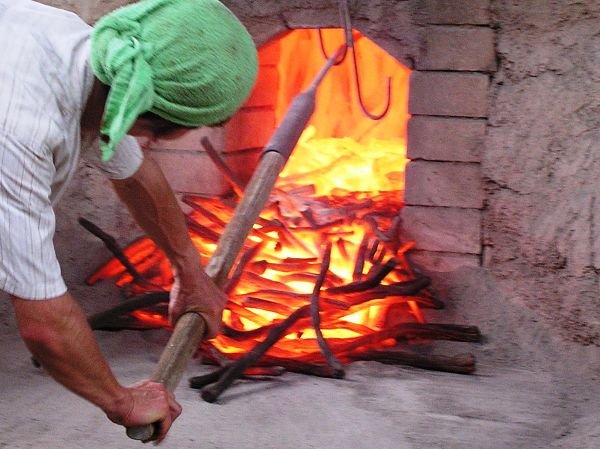Japanese Charcoal Binchotan - What is Binchotan ?
Deep in the mountains of Wakayama not too far from the famous Kumano Kodo Trail, you can find Junji Nakagami, a binchotan craftsman who has been making binchotan for more than 20 years. His place of work is 2 kilns that he built himself under an old shed like structure in the middle of dense forest. He works alone, the only sounds are the wind moving through the cedar pines and some classical music from an old radio. Like a scene from a movie, a photo just could not express the simplicity of this place.
Nakagami-san makes the most expensive charcoal in the world. Prized by Japanese chefs Binchō-tan is sometimes called white charcoal because it leaves only a fine white ash. It is stronger than steel and one single piece can burn for as long as 4 hours. It gives a very clean heat with almost no smoke or smell which makes it perfect for BBQ grilling. The best Japanese yakitori chefs swear by it, honestly you will never think the same again about grilled chicken.
Dating back over 300 years to the Edo period in the 17th century Japan the handmade manufacturing techniques of Binchotan have been passed down for generations. During the Genroku era, Binchotan charcoal was invented by a craftsman named Binch-ya Chozaemon, who started to produce it in Tanabe, Wakayama.
Binchotan may have been around for hundreds of years, but it wasn’t until the last century that scientists started to study its chemical makeup. What they found was that Binchotan had a microporous structure, and each gram could cover 270 square meters of internal surface.
Binchotan charcoal works via a process of absorption, attracting particles to the surface of the charcoal. Due to its micro-pourus structure it can absorb gasses from the atmosphese and also absorb chemicals and heavy metals from water.
Binchotan also actively absorbs the bad positive ions (atoms) in the air (like carbon dioxide) and releases good negative ions similar to those found around waterfalls. Positive ions in the air can cause fatigue and impact respiratory function. Binchotoan can absorb these ions, replacing them with negative ions that are thought to increase energy and improve lung function. In fact there are many health products from toothpaste and eye masks to water filters that are made from binchotan.
Binchotan is made from the Ubame Oak, a sturdy wood that grows native to the forests and hills of Kishu province. Binchotan charcoal makers like Nakagami -san will stack meticulously chosen Ubame Oak branch clippings within large kilns.
The kilns are set to burn at a low temperature for weeks, controlling for oxygen flow to make the charcoal. Toward the end of the process, the kilns are turned up to almost 1000 degrees, while the charcoal makers monitor the color of the smoke produced at such a high temperature. Once the smoke turns clear, the charcoal is thought to be free of impurities.
Unfortunately, Binchotan’s reputation means there has been an increase in demand for this super-pure charcoal. The trees that are used to create this unique material are being overharvested and threatened. Nakagama-san however is committed to sustainable harvesting practices and owns a large area of land where he grows and cultivates Ubame Oak allowing areas to grow back before harvesting again.
We visit Nakagami-san’s workshop and also enjoy a BBQ with his binchotan on our Mie/ Wakayama Tour.





